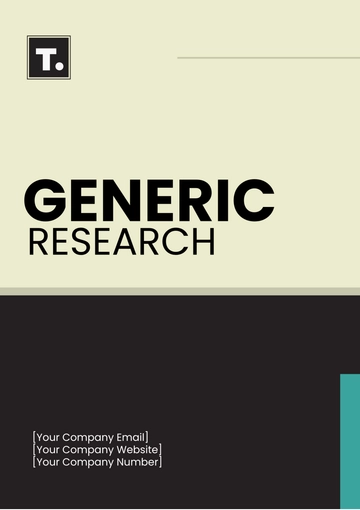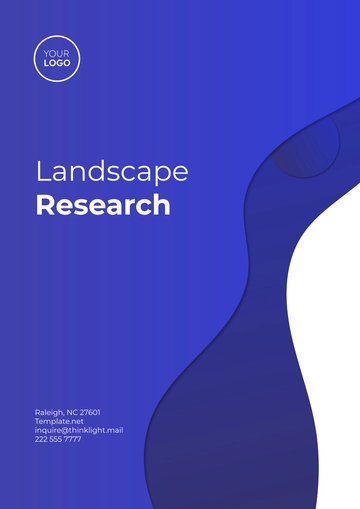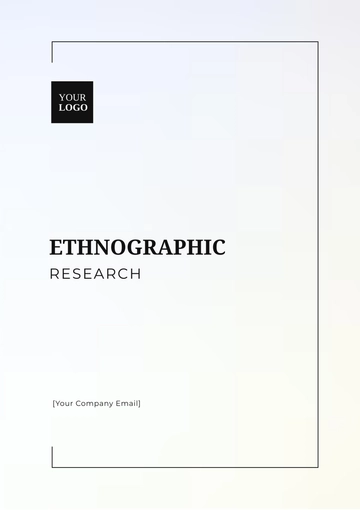Free Research Fact Sheet


I. Overview
This section provides a general overview of the research project, including its objectives and significant contributions.
Project Title:
Exploring the Effects of Urban Green Spaces on Mental Health
Research Focus:
This research project examines how urban green spaces influence the mental health of city dwellers.
Project Objectives:
To assess the mental health benefits associated with regular exposure to urban green spaces.
To identify which features of green spaces are most effective in improving psychological well-being.
To provide recommendations for urban planning and public health policies based on empirical data.
Expected Impact:
The findings are expected to inform urban planners and policymakers, potentially leading to an increase in the integration of green spaces into urban environments.
Improved mental health outcomes for urban populations, with long-term benefits in terms of healthcare cost reductions and enhanced community well-being.
II. Key Research Findings
The major findings of the research are summarized below:
Major Finding #1: Regular access to urban green spaces is significantly correlated with lower levels of stress and anxiety among urban residents.
Major Finding #2: Features such as the diversity of plant life, availability of walking paths, and maintenance of green spaces are key factors that enhance the mental health benefits.
Major Finding #3: Urban green spaces also serve as community hubs, fostering social interactions that are crucial for mental health.
III. Methodology
This section details the methods and tools used in conducting the research, including unique approaches to data gathering or analysis.
Data Sources:
Primary Data Sources: Surveys and interviews with residents of three major cities with varying levels of green space integration.
Secondary Data Sources: Peer-reviewed articles and case studies on urban planning and mental health, city planning records, and public health datasets.
Research Instruments:
Surveys: Custom-designed questionnaires assessing frequency of green space usage and self-reported mental health status.
Interviews: Semi-structured interviews conducted with urban dwellers, urban planners, and mental health professionals.
Observational Checklists: Used during site visits to assess the features and maintenance of urban green spaces.
Analysis Techniques:
Statistical Analysis: Utilized SPSS and R for statistical testing, including regression analysis to examine relationships between green space exposure and mental health outcomes.
Thematic Analysis: Used for analyzing qualitative data from interviews to identify common themes and narratives.
GIS Mapping: Geographic Information Systems (GIS) tools were employed to map the distribution of green spaces and analyze accessibility relative to demographic distributions.
IV. Research Team
Introduce the main contributors to the research project with brief roles and responsibilities.
Name | Role | Responsibilities |
|---|---|---|
[Researcher Name] | Lead Researcher | - Managing research design and implementation, ensuring ethics compliance, analyzing data, and preparing the final report. |
[Researcher Name] | Co-Investigator and Data Analyst | -Designing methodologies for data collection, conducting SPSS and R statistical analysis, and aiding in writing/reviewing academic papers. |
[Researcher Name] | Research Assistant | Helping with data collection, managing research databases, and assisting in logistics of the research project. |
[Researcher Name] | GIS Specialist | -Using GIS tools to map green space distribution, analyze spatial data for patterns and collaborating with data analysis team to integrate GIS findings. |
[Researcher Name] | Community Liaison | -Facilitating team-stakeholder communication, organizing community outreach and collecting feedback for research. |
V. Research Impact and Applications
Discuss real-world applications of your research findings, including any potential societal, economic, or environmental impacts.
Application #1: Urban Planning and Development
Description:
The research findings offer data for urban planning to incorporate green spaces, enabling planners to create healthier city environments that could improve public health and reduce mental health-related healthcare expenses.
Application #2: Public Health Policy
Description:
This study's findings on the importance of regular access to green spaces for mental health prevention could inform public health policy. It could lead to prioritizing the creation and upkeep of urban parks and gardens, especially in city areas with prevalent mental health issues.
Further applications:
Environmental Conservation:
The research on mental health benefits of green spaces could boost environmental conservation by garnering more public and governmental support for natural area preservation in and out of cities.
Educational Programs:
This research could help schools introduce programs promoting mental health and proactive health behaviors through outdoor activities in green areas.
Corporate Wellness Programs:
Corporations can enhance employee wellbeing and productivity by incorporating more greenery in workspaces and facilitating outdoor breaks, linking environmental design to economic benefits.
VI. Contact Information
Provide contact details for further inquiries and information about the research.
Name: [YOUR NAME]
Department: [YOUR DEPARTMENT]
Email: [Your Email Address]
Phone: [Your Phone Number]
This Fact Sheet is designed to convey critical information at a glance and provide an accessible entry point for deeper engagement with our research. For more detailed information, contact [YOUR NAME] or visit [Your Company Name].
- 100% Customizable, free editor
- Access 1 Million+ Templates, photo’s & graphics
- Download or share as a template
- Click and replace photos, graphics, text, backgrounds
- Resize, crop, AI write & more
- Access advanced editor
Research Fact Sheet Template from Template.net. This downloadable template is specifically designed to help you organize and present data clearly and effectively. Editable in our AI Editor Tool, it ensures that every detail is tailored to your needs. Additionally, this template is printable, making it easy to distribute and share your polished, professional fact sheet in meetings or academic settings.





























